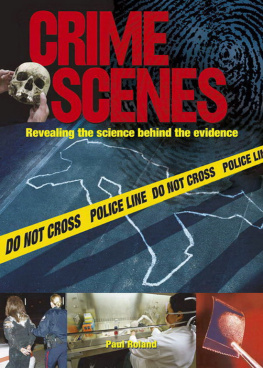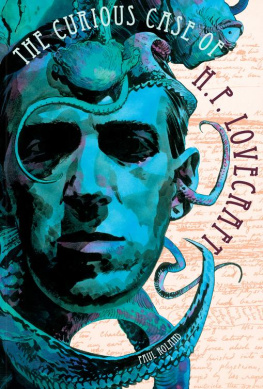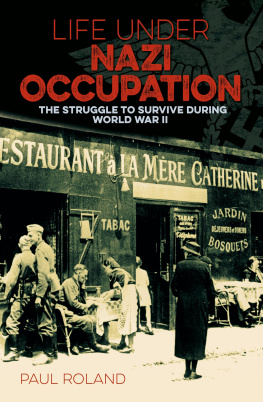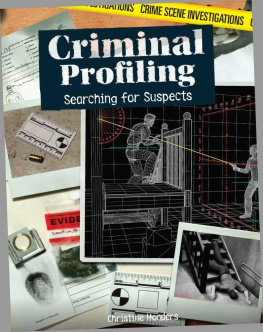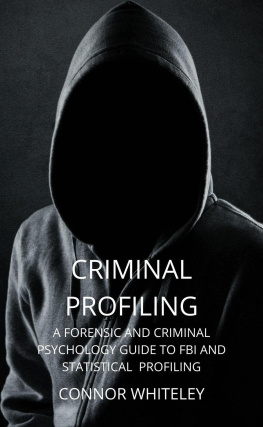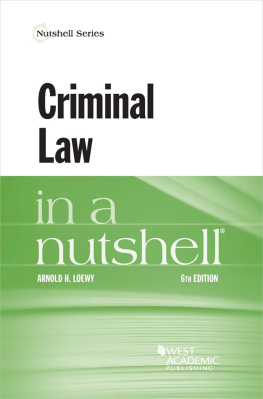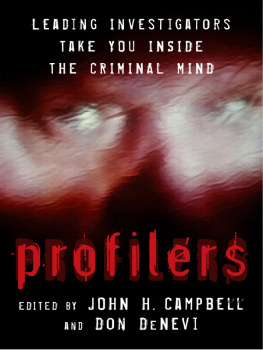Paul Roland - In The Minds Of Murderers
Here you can read online Paul Roland - In The Minds Of Murderers full text of the book (entire story) in english for free. Download pdf and epub, get meaning, cover and reviews about this ebook. year: 2009, publisher: Arcturus Digital Limited, genre: Detective and thriller. Description of the work, (preface) as well as reviews are available. Best literature library LitArk.com created for fans of good reading and offers a wide selection of genres:
Romance novel
Science fiction
Adventure
Detective
Science
History
Home and family
Prose
Art
Politics
Computer
Non-fiction
Religion
Business
Children
Humor
Choose a favorite category and find really read worthwhile books. Enjoy immersion in the world of imagination, feel the emotions of the characters or learn something new for yourself, make an fascinating discovery.
- Book:In The Minds Of Murderers
- Author:
- Publisher:Arcturus Digital Limited
- Genre:
- Year:2009
- Rating:3 / 5
- Favourites:Add to favourites
- Your mark:
- 60
- 1
- 2
- 3
- 4
- 5
In The Minds Of Murderers: summary, description and annotation
We offer to read an annotation, description, summary or preface (depends on what the author of the book "In The Minds Of Murderers" wrote himself). If you haven't found the necessary information about the book — write in the comments, we will try to find it.
Criminal profiling has been seen more and more in newspapers and on TV. This work explores an area of criminal detection, drawing on the more disturbing areas of psychology.
In The Minds Of Murderers — read online for free the complete book (whole text) full work
Below is the text of the book, divided by pages. System saving the place of the last page read, allows you to conveniently read the book "In The Minds Of Murderers" online for free, without having to search again every time where you left off. Put a bookmark, and you can go to the page where you finished reading at any time.
Font size:
Interval:
Bookmark:

IN THE MINDS OF
MURDERERS
Paul Roland

'All of a sudden I realized that I had just done something that separated me from the human race and it was something that could never be undone, I realized that from that point on I could never be like normal people. I must have stood there in that state for 20 minutes. I have never felt an emptiness of self like I did right then and I never will forget that feeling. It was like I crossed over into a realm I could never come back from.'
David Gore, 1985. An auxiliary sheriff's deputy, Gore operated, often in tandem with his cousin Fred Waterfield, abducting, raping and murdering women and girls in Florida

This edition published in 2012 by Arcturus Publishing Limited
26/27 Bickels Yard,
151153 Bermondsey Street
London SE1 3HA
Copyright 2007 Arcturus Publishing Limited/Paul Roland
All rights reserved. No part of this publication may be reproduced, stored in a retrieval system, or transmitted, in any form or by any means, electronic, mechanical, photocopying, recording or otherwise, without written permission in accordance with the provisions of the Copyright Act 1956 (as amended). Any person or persons who do any unauthorised act in relation to this publication may be liable to criminal prosecution and civil claims for damages.
ISBN: 978-1-84858-848-6
Picture Credits
Corbis, Mary Evans Picture Library, Dover Books, Getty Images, Topham Picturepoint, TopFoto, The Kobal Collection, PA Photos, The Toronto Sun, British Film Institute. For more information contact
We have made every attempt to contact the copyright-holders of the photographs and illustrations within this book. Any oversights or omissions will be corrected in future editions.
COVER CREDITS
TopFoto Richard Ramirez
Getty Charles Manson
Thousands of books have been written about murder and many others have been written about 'profiling', but the reader will find this book to be different from the others in several ways. To begin with, the author takes the reader through a historical tour of infamous offenders including terrorists, serial killers, assassins and dictators, explaining how different applications of 'profiling' have played an important role in the past. Second, it does not attempt to shock the reader with gory descriptions of gruesome crimes rather it informs via factual presentations of case information. Third, it was written with the informed reader in mind and consequently is well researched in a variety of fields including history, psychology, sociology, and criminal investigative analysis or 'profiling'. Fourth, the author utilizes the works and words of recognized experts in the field. Experts in the sense of their having been members of the FBI's Behavioral Science Unit in the 'early days' and therefore possessing first hand information. Finally a fact very much appreciated by this writer, the author does not approach 'profiling' in a sensational manner but instead presents the topic in a straightforward way.
This book provides the reader with a wide variety of tasks assigned to FBI and other profilers which include research interviews, proactive strategies, crime analysis of staged crimes, linking of cases via behaviour, and interrogation. One feature of the book something which will be of great interest to the reader is a series of crime accounts and the responsible criminals against which the profiling process was successfully applied.
Having worked as a 'profiler' in the FBI's Behavioral Science Unit (19781994) and having continued in the same work with a group of retired FBI 'profilers' at the Academy Group, Inc. (AGI), it is my considered opinion that a close study of the investigative tool known as 'profiling' always reveals that it is much simpler than imagined. This book supports the truthfulness of that statement in a factual, informative, and enjoyable manner.
Roy Hazelwood
'Criminals think differently from responsible people.'
Dr Stanton Samenow, Inside the Criminal Mind, 1984
This is not another book about serial killers, although you will find some of the most notorious mass murderers of modern times profiled in these pages, together with sexual sadists, serial rapists, arsonists, extortionists, bank robbers, war criminals, tyrants and terrorists.
Nor is it yet another rehash of famous cases that will be overly familiar to connoisseurs of true crime. It is far more interesting than that because this book explores the new art of criminal profiling and what it reveals about the nature of evil, specifically what motivates men, women and sometimes even children to commit the most appalling acts imaginable.
Offender profiling was largely but not exclusively developed by the FBI Behavioral Science Unit at Quantico, Virginia during the late 1970s and 1980s and is now widely practised throughout the world by law enforcement professionals who have come to realize that even forensic science is not infallible.
Profiles can be prospective which means that they can be used to predict which individuals in a particular segment of society have the potential to offend, or they can be retrospective which involves identifying which type of individual might have been responsible for a specific crime or series of crimes from the behaviour they exhibited at the scene. Prospective profiles are generally favoured by intelligence agencies who seek to identify potential terrorists before they commit an atrocity, but this approach is controversial and has come under increasing criticism because it can lead to racial stereotyping, whereas retrospective profiling aims to create a behavioural composite of an unknown subject or UNSUB, to narrow the focus of an investigation rather than pointing a finger at a specific individual.
Hundreds of cases each year in the United States alone benefit from the insights provided by BSU profilers who have been able to claim a 92 per cent accuracy rating every year between 1978 and 1994, according to Russell Vorpagel in Profiles in Murder. The standard FBI profile features 15 key points or clues to the type of personality who should be considered responsible for the offence. If two of these points prove to be inaccurate, the Bureau considers it one of their rare mistakes.

Former FBI Special Agent Vorpagel described the profiling process as a 'psychological autopsy' and compared the profile itself to an Impressionist painting which is composed of numerous brush strokes none of which may be significant on their own, but taken together create a meaningful picture.
In the Minds of Murderers reveals the secrets of this new method, specifically how a profiler can tell when a crime scene has been staged or altered and whether a murder victim has been posed to divert attention from the intended offence, usually robbery or rape. It describes the extent to which fantasy and control compels sadistic offenders to abduct and torture total strangers, the significance of the serial killer's 'signature' and what part stressors play in pushing a perpetrator over the edge.
It details what the choice of weapon and ferocity of an attack reveal about the assailant, what can be gleaned from a body that has been mutilated post-mortem as well as what the manner of disposal and the location tell investigators about the killer's relationship to the victim. Was it simply dumped, partially covered or buried?
Next pageFont size:
Interval:
Bookmark:
Similar books «In The Minds Of Murderers»
Look at similar books to In The Minds Of Murderers. We have selected literature similar in name and meaning in the hope of providing readers with more options to find new, interesting, not yet read works.
Discussion, reviews of the book In The Minds Of Murderers and just readers' own opinions. Leave your comments, write what you think about the work, its meaning or the main characters. Specify what exactly you liked and what you didn't like, and why you think so.



